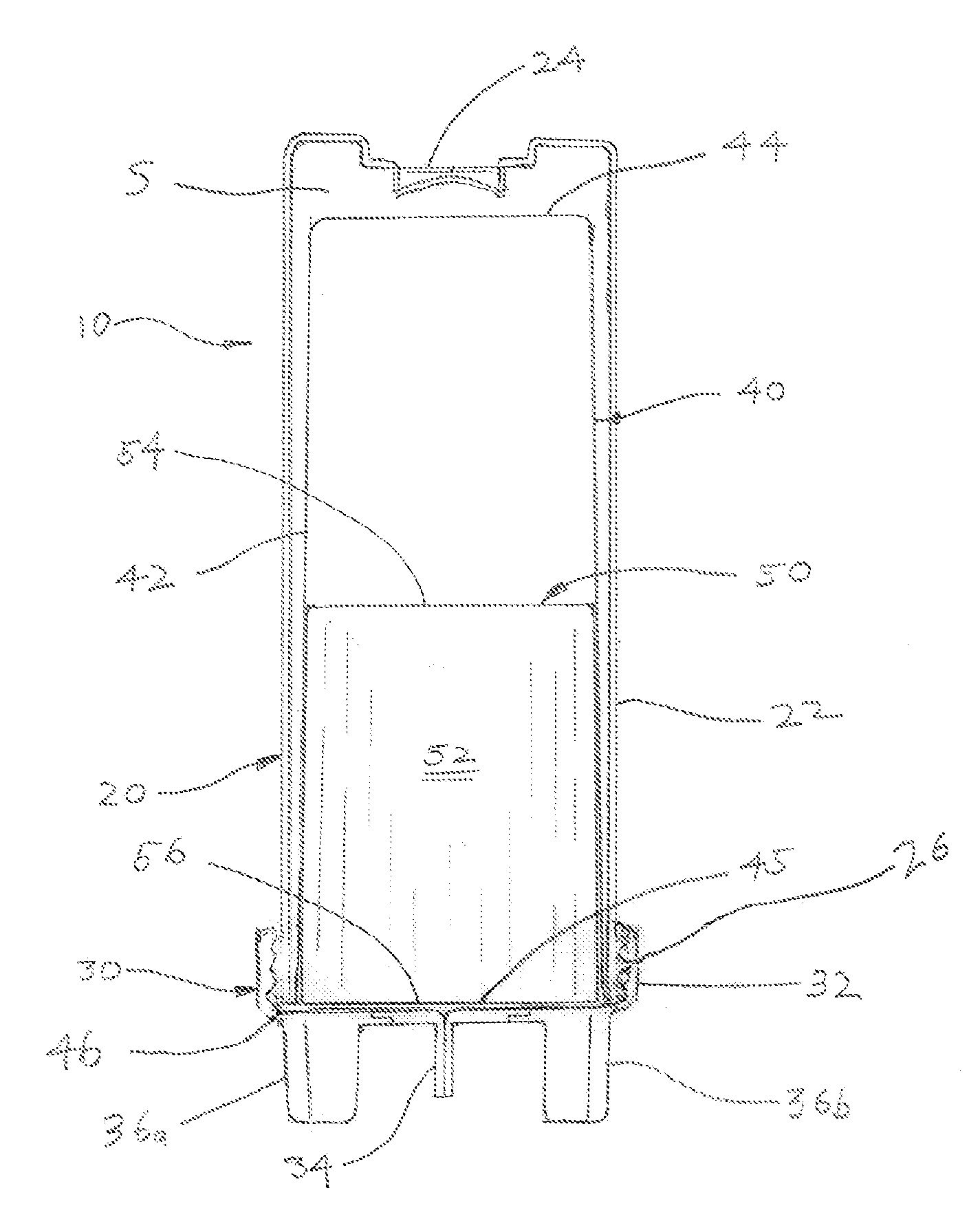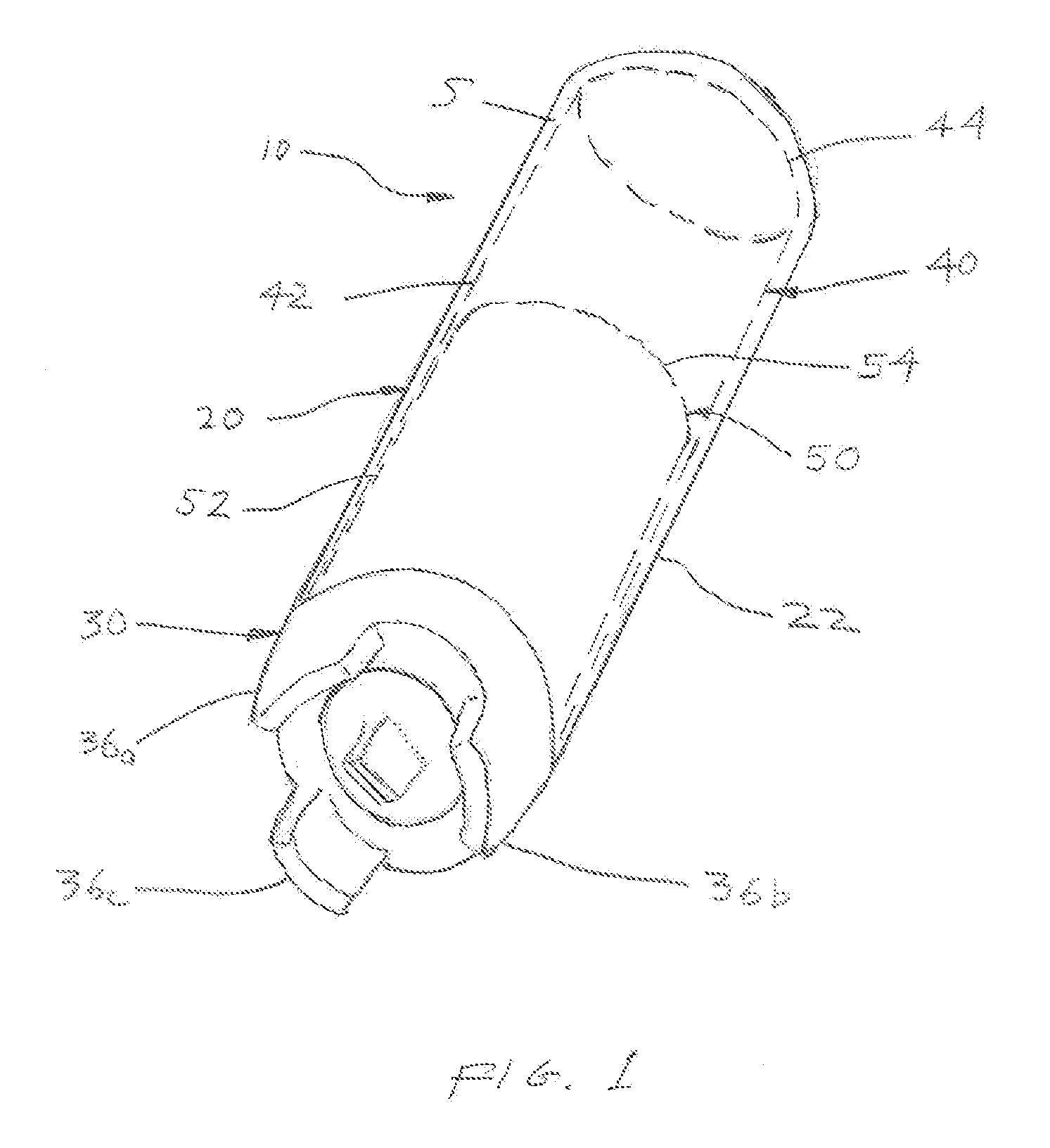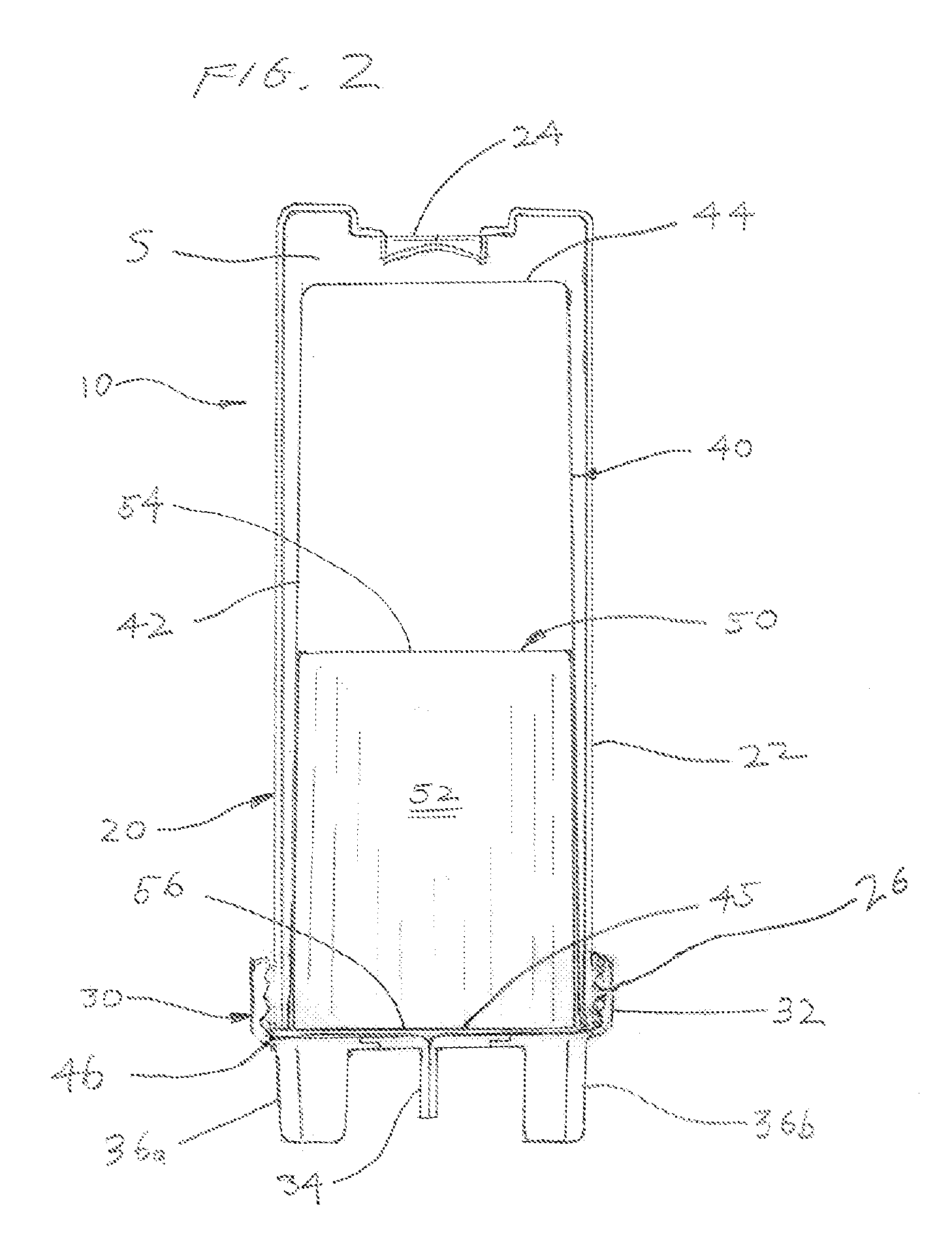Fluid dispenser, system and filling process
a dispenser and fluid technology, applied in the field of bottles, can solve the problems of not easy to refill, create new problems for the use of these dispensers, and affect sanitation, productivity and was
- Summary
- Abstract
- Description
- Claims
- Application Information
AI Technical Summary
Benefits of technology
Problems solved by technology
Method used
Image
Examples
Embodiment Construction
A. Description of the Preferred Embodiment
[0039]In FIGS. 1 and 2, the dispenser system of the preferred embodiment 10 consists of a dispenser bottle 20, a bottom dispensing cap 30, a pre-filled liner 40, and an inversion tube 50. Dispenser bottle 20 has a body 22, an umbrella valve 24, and a threaded open end 26 (see FIG. 2). Cap 30 has a screw-on ring 32, a duckbill valve 34, and three feet 36a, 36b and 36c (not shown on FIG. 2). Pre-filled liner 40 has a body 42, a closed end 44, an open end 45, a flange 46, and prior to insertion a sealed lid 60 (see FIG. 5). Inversion tube 50 has a body 52 an open top 54 and an open bottom end 56.
[0040]In FIGS. 1 and 2, the dispenser system of the preferred embodiment 10 consists of a dispenser bottle 20, a bottom dispensing cap 30, a pre-filled liner 40, and an inversion tube 50. Dispenser bottle 20 has a body 22, an umbrella valve 24, and a threaded open end 26 (see FIG. 2). Cap 30 has screw-on ring 32, a duckbill valve 34, and three feet 36a,...
PUM
| Property | Measurement | Unit |
|---|---|---|
| thickness | aaaaa | aaaaa |
| thickness | aaaaa | aaaaa |
| thickness | aaaaa | aaaaa |
Abstract
Description
Claims
Application Information
 Login to View More
Login to View More - R&D
- Intellectual Property
- Life Sciences
- Materials
- Tech Scout
- Unparalleled Data Quality
- Higher Quality Content
- 60% Fewer Hallucinations
Browse by: Latest US Patents, China's latest patents, Technical Efficacy Thesaurus, Application Domain, Technology Topic, Popular Technical Reports.
© 2025 PatSnap. All rights reserved.Legal|Privacy policy|Modern Slavery Act Transparency Statement|Sitemap|About US| Contact US: help@patsnap.com



